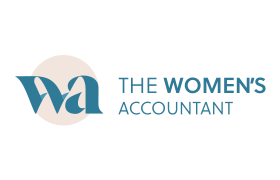Numbers to Nail for Every Woman In Business 💅
From profit margin to cash flow, master these key metrics and put yourself in the driver’s seat to business profitability, freedom and sustainable growth.

Emma Bowdler
I’m a cheerleader for women and an accountant bursting with personality.
She’s juggling all the balls. She’s wearing all the hats. She’s kicking all the goals. But the chances are — no matter how multi-talented you are — you didn’t start your business to become a whiz at wrangling numbers. After all, that’s what accountants are for! Well, kinda…
While there are so many hats to wear, balls to juggle, and other analogies to overuse, when you’re running a business — even if you hate numbers — it’s still important to know *some* of the key metrics underlying your business’ financial health. As our Founder and Head Bean Counter, Emma Bowdler, would say: ‘know enough to be dangerous, then leave the rest to the experts’.
If numbers make you wanna run for the hills, bury your head in the sand, and crawl under the doona — and do them all somehow at the same time — fear not, fierce entrepreneur. We’re here to demystify the essential numbers you need to nail down to ensure your business thrives.
1. Gross Profit Margin
What Is It: Your Gross Profit Margin (GPM) is the heartbeat of your business. It tells you what percentage of your revenue is actual profit, a.k.a how much moolah you’re making after accounting for the cost of making it.
How To Calculate It: To calculate your GPM, subtract the cost of goods sold (COGS) from your total revenue, then divide by the total revenue. Then, multiply it by 100 to express as a percentage.
Why it Matters: A healthy GPM indicates you’re not just covering your costs but making enough to fund other aspects of your business. If your GPM is fluctuating, it could signal issues with pricing, costs (outta) control, or inefficiency. Stable and high GPMs suggest she’s got her management practices and product quality firing on all cylinders.
Expert Tip: Regularly compare your GPM against others in your industry. The Australian Tax Office (ATO) provides handy benchmarks to help you gauge where you stand (although, beware of the comparisonitis!).
Calculating Gross Profit Margin (GPM)
Imagine you run a boutique selling cute dog collars, and your numbers for the month are:
- Total Revenue (amount earned from sales before expenses are deducted): $10,000
- Cost of Goods Sold (COGS – all direct costs associated with producing the collars): $4,000
Step-by-Step Calculation
Gross Profit → Total Revenue (10K) – COGS (4K) = Gross Profit (6K)
Gross Profit Margin → Gross Profit (6K) / Total Revenue (10K) ) = .6 (x 100) = 60%

2. Net Profit
What Is It: Net Profit is what’s left after all your business expenses are deducted from your total revenue. This therefore indicates the actual profitability of your business.
How To Calculate It: Subtract all operating expenses, interest, taxes, and any other expenses from your total revenue.
Net Profit
= Total Revenue
− Total Expenses
Why it Matters:
Unlike GPM, which focuses on production costs, Net Profit takes into account all operating expenses, and therefore gives you a truer picture of your financial health. A consistent net profit means your business is sustainable and profitable (we love to see it).
Expert Tip:
Keep a keen eye on your overheads. When costs start piling up, they can become a real headache, especially when business is slow, and can put a significant dent in your net profit. The way we see it — treat overheads like toenails and trim them often (apologies for the gross visual).
3. Price Point
What Is It:
One of the most head-scratching parts of running a business. Price too high, and you risk scaring off potential customers. Price too low, and you might not cover your costs or be perceived as undervaluing your offering. Ugh.
The process of weighing up the perceived value, quality, rarity, and a whole host of other factors, when it comes to setting your price point is far more nuanced than it might seem at first glance. And while there’s no ‘one way’ to do it, there are definitely wrong ways.
How To Price Right:
Start by understanding your costs (both direct costs like materials and labour, and indirect costs like overheads and marketing). Next, assess customer demand; what value does your product or service provide, and what are customers willing to pay for it? Then, come up with a figure and take a look around the market to ensure your rates are competitive yet sustainable.
Expert Tip:
Pricing is not a ‘set-and-forget’ task. Regularly review and adjust your prices based on what’s happening around you, including changes in production costs, and even customer feedback. Stay flexible and be ready to tweak your pricing strategy if you need to.
Here is one example of a Cost-Plus Pricing formula to get you started:
Price
= Cost
+ (Cost× Markup
Percentage)
Cost-Plus Pricing Formula:
This method involves adding a markup percentage to your cost to ensure a profit margin. For example, if your product costs $50 to make and you want a 20% profit margin, your price would be:
Price = $50 + ($50×0.20) = $60
Need help with your
Pricing Strategy?
4. Cash Flow
What Is It:
Cash flow is the lifeblood of any business; it represents what moves in and what goes out of your bank account.
Positive cash flow means you have more money coming in than going out, which is essential for day-to-day operations.
Negative cash flow, well, we’re pretty sure you can figure that out.
How To Calculate It:
Track every dollar that comes in and goes out of your business (and by that, we mean, let Xero do it for you).
Regularly update your cash flow statements, look for trends and be able to recite your monthly revenue, expenses and profits.
Why it Matters:
While it might not always be the fun part of what we do as business owners, it allows us to keep on doing it. Good cash flow management ensures you can cover expenses, invest in growth opportunities, and navigate financial hiccups.
Poor cash flow can lead to serious headaches, and severely impact your business operations, even if your business is profitable on paper.
Expert Tip:
Get yourself a robust cash flow management system.
Using accounting software like Xero provides real-time visibility over your finances, allows you to monitor cash inflows and outflows seamlessly and can even help you anticipate future cash needs.
Set up automated bank feeds and use reconciliation features to ensure your financial data is always up-to-date.
5. Total Inventory
What Is It:
Managing how much stock you have on hand at any one time is often the ultimate balancing act. Too much stock ties up cash and storage space, while too little can lead to missed sales opportunities.
How To Calculate It:
Regularly review your inventory levels and compare them to your sales data to maintain an optimal balance.
Why it Matters:
Efficient inventory management ensures you have the right products available at the right time, without overcommitting precious resources. It’s (Alicia) keys to maintaining healthy cash flow and customer satisfaction.
Expert Tip:
Regularly review inventory levels to identify slow-moving items, optimise reorder points, and ensure that your stock levels are balanced to meet demand, without overstocking. This approach helps free up cash, reduce storage costs, and maximises profitability by ensuring the right products are available when you (and your customers!) need them.
But Wait, What About Revenue?
Revenue is often seen as the glittery crown jewel of business metrics, but let’s be real — it can be a bit of a vanity metric. While it’s exciting to see those high figures roll in, revenue alone doesn’t paint a very accurate picture of your business’s financial health.
For one, it conveniently ignores the costs involved in generating that income. You might be raking in the dollars, but if your expenses are sky-high, your profit margins could be skimpier than a Hollywood bikini. Having high revenue also doesn’t mean you have the cash flow necessary to keep the lights on or invest in growth opportunities, and it suggests little about sustainability or operational efficiency.
Because, sure, a spike in sales looks great on paper, but what if it’s driven by one-time events, heavy discounts, or temporary market conditions?
High revenue figures don’t reflect the quality of your earnings or the sustainability of your business model. To truly understand how your business is performing, you need to look beyond the shiny revenue numbers and dive into profit margins, cash flow, and the other critical metrics we’ve just been through.
Remember, it’s not just about how much you make: it’s about how much you keep and how smartly you manage it.
Beyond the Financial Numbers
While nailing down your financial number$ is crucial, there’s more to business success than just the figures on your balance sheet.
Here are a handful of other numbers to complement your financial metrics and propel your business towards one with independence and freedom as the bottom line.
Customer Retention Rates:
Loyal customers or clients are literal liquid gold. High retention rates mean repeat business and word-of-mouth referrals, and that spells business profitability.
We love a business woman who focuses on providing excellent service and adding value to keep customers coming back.
Lead Generation and Conversion Rates:
Quality leads and effective conversion strategies are vital.
How do you know your marketing is attracting the right audience, and that your sales process is streamlined to boost conversions?
These two numbers give you a pretty darn good indication.
Transaction Value and Frequency:
Increasing the value and frequency of transactions boosts revenue. Upselling, cross-selling, and loyalty programs can help you slay this.
Costs and Expenses:
Keeping your fixed and variable outgoings in check doesn’t have to be a daunting task; think of it as a strategic way to free up resources for growth and innovation.
Start by reviewing what’s going out of your business and identify any areas where you can trim a few dollars.
Ready To Take Your Business
To The Next Level?
You do not — we repeat — you do not have to become a money magician or spreadsheet wizard to run a business. But (and it’s a big one), having a solid understanding of how to manage these key numbers is absolutely vital for your business’ success. It helps you make data-driven decisions, correct course if things have fallen off track, and can help you seize opportunities that are there for the taking.
We want to live in a world with women high fivin’ because business is thrivin’. So, whether you need a business cheerleader, a strategic mastermind, or someone who can really wrangle those numbers, The Women’s Accountant is here to champion your success every step of the way.
Ready To Turn Those Bold Dreams Into Blooming Realities?
Let’s make it happen!
Equip your business with the tools for success with our
team of award-winning strategists.
Book a Bloom & Boom –
Business Growth Strategy Session Now:
Automate, Delegate, Rejuvenate – Systems and Processes Every Business Needs
Automate, Delegate, Rejuvenate: Systems and Processes Every Business Needs Emma BowdlerI’m a cheerleader for women and an accountant bursting with personality. Close your eyes (ok, well not *literally* because you need to keep reading), and picture: an entrepreneur....
Feast or Famine: Dealing with the Ebbs of Business Cash Flow
Feast or Famine: Dealing with the Ebbs of Business Cash Flow Cash flow lumpier than your mother-in-law’s gravy? You’re not alone. Let’s talk ‘feast or famine’ cycle and how to manage your cash flow. Emma BowdlerI’m a cheerleader for women and an accountant bursting...
Budgeting 101: How To Nail Your Numbers with the Bottoms Up Budget
Budgeting 101: How To Nail Your Numbers with the Bottoms Up Budget Emma BowdlerI’m a cheerleader for women and an accountant bursting with personality. Let’s face it, you read the word ‘budget’ and immediately, your eyes glazed over. We don’t blame you. Hardly the...






